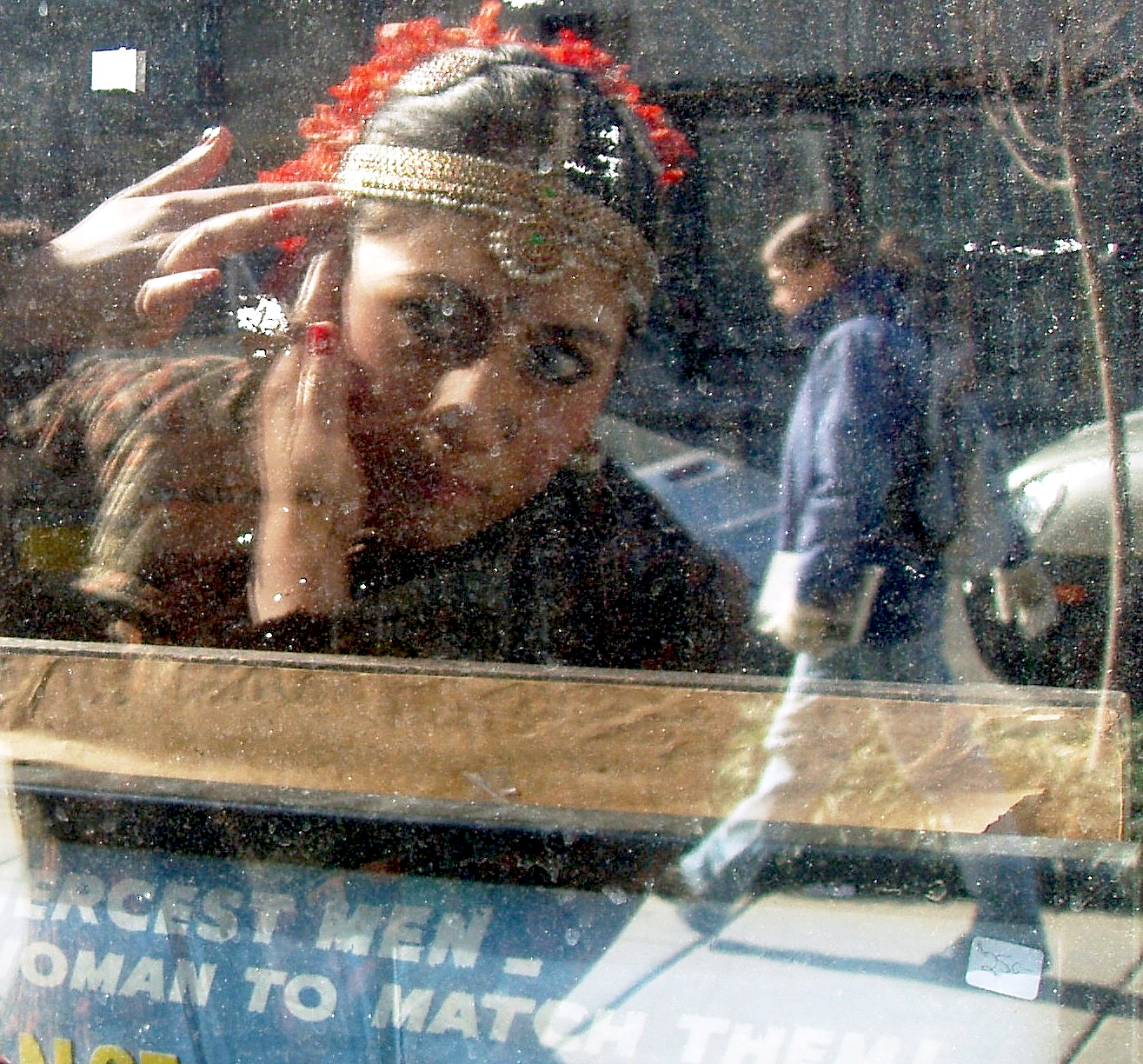
[Photo by ARUSHI TERWAY]
BY KISHWER VIKAAS When I first met Urmika Devi, she was a senior at Central High School who was known for both her acting skills in the drama society and her commitment to studying Indian classical dance. Almost ten years later, now a third-year law student at Temple, the 26-year old Devi has veered very little from her original interest in the arts. This Friday and Saturday she brings her dance company, Urmika Devi Dance Collective to Chinatown to present MOVING BEYOND FORM: Explorations in Rhythm & Storytelling in Classical & Contemporary Indian Dance, a show she organized in collaboration with the Asian Arts Initiative. It features Devi’s company along with dancer Annelize Machado and dance company Post Natyam Collective in works inspired by modern dance, ballet, yoga, martial arts and classical Indian dance forms including Bharatanatyam, Kuchipudi and Kathak. The collaboration is unprecedented, the first of its kind to feature local dancers performing contemporary Indian dance.
PHAWKER: Tell me a little bit about your dance background. Did anyone else in your family dance?
URMIKA DEVI: I grew up immersed in the arts, thanks to my family. My aunt, who’s an art historian and also involved in the Asian Arts Initiative, would take me to see shows all around Philadelphia. While my grandmother and my mother danced, they were not trained dancers. Dancing is a very Bengali thing. There’s this idea in Bengali culture that everyone must do something creative, so after a dinner party, people sit down and sing or recite poetry or dance.
PHAWKER: When did you start dancing?
URMIKA DEVI: My mom put me in formal dance training when I was four. According to family legend, when I was a toddler, one New Year’s Eve they found me holding on to the coffee table, partying away by myself. That’s when they knew I was a dancer. I took ballet, jazz and tap lesson three days a week for about eight years. In fourth grade, I started studying Bharatanatyam, which is classical Indian dance. I would spend almost three hours every day during high school dancing. I would wake up at 6AM to go to rehearsal and then go again after school.
PHAWKER: Your show, In Dreams incorporates both classical ballet and contemporary and classical Indian dance moves. How would you describe it? Is it fusion? Is it Bollywood?
URMIKA DEVI: I don’t like the word fusion. A soup or salad isn’t fusion food. In Dreams is a 25 minute piece, the longest piece I’ve ever created. Now the movements are not so clear, not so such “Well, this is Indian, this is ballet.” It’s just dance. And it’s not Bollywood – I hate when people think Indian dance is just Bollywood. Bollywood dancing itself is not as pure. Of course when it comes to Indian dance, traditionalists will say I mutilated it since I’m a modern dancer.
PHAWKER: What is In Dreams about?
URMIKA DEVI: In Dreams is a three-part dance depicting the effect of migration on people and centers around the close relationship between a mother and a daughter. The first part begins with the pregnant daughter (played by Abigail Thompson) who has just left her parents’ home in India to move to America to be with her husband. The daughter sleeps and in her dreams, she meets her mother, who she has left behind in India, as well as her unborn child. The second part features an ethereal sequence where the child (played by Ashley Wood) dances. In the last scene the mother (played by Claudia van Poperingen), reminisces with her three maids, who’ve almost become her second family, about the children who’ve gone away.
PHAWKER: How much of In Dreams was based on your personal experience? You were born in India, the child of Bengali parents.
URMIKA DEVI: Well the story of migrants is very real, especially for South Asians whose families have gone abroad. During the school year, I would go to public school in Philadelphia and ride SEPTA around the city. Then I would spend time in India with my grandparents and their maids for six weeks every summer. I got to know the maids really well. They all really worked really hard, sometimes several different jobs, to send their own kids abroad for their education. Those experiences influenced In Dreams.
PHAWKER: Tell me a little about the other performers in the show.
URMIKA DEVI: Annelize is a South Asian from South Africa, who now lives in Texas. She started dancing in her 20s. She studied martial arts, especially kalari, intensively. She’s studied both Bharathnayam and ballet, but she her style of choice is modern dance. Post Natyam Collective has four multi-national members from across America. I met both Annelize and members of the Post Natyam Collective at various conferences for Asians in the arts.
PHAWKER: Currently, you are a third year student at Temple Law. How does your legal education coincide with your dance background?
URMIKA DEVI: Well, it’s definitely hard to be a dancer and a law student. But I think of law school as the ticket to my work in the arts. All of my classes contribute to my work in dance and theater – whether it’s a class about copyright, tax or trademarks. As a producer, you’re basically a lawyer anyway. You deal in contracts, you negotiate. Law makes perfect sense for this work. Artists are crazy, but law is practical. And law and dance intersects where law is not as black and white as it seems. Like law, dance is an imperfect ideal. You stand in front of a mirror, hour after hour, trying to make something perfect and it may not be.
Asian Arts Initiative ?& Urmika Devi present
MOVING BEYOND FORM Explorations in Rhythm ?& Storytelling in Classical ?& Contemporary Indian Dance
Friday, Feb. 26, 7:30 p.m.
Saturday, Feb. 27, 4:30 p.m.
Asian Arts Initiative?
1219 Vine Street
Chinatown Philadelphia ?
[Performance photos by Iva Momcheva]
